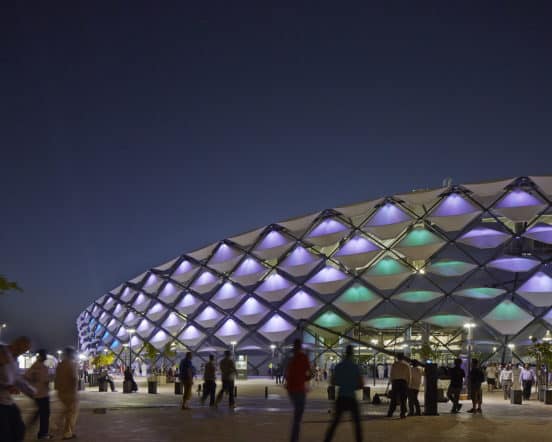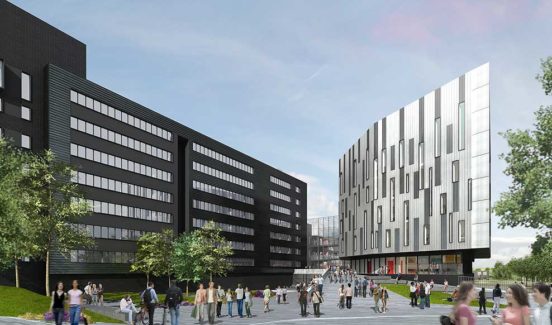Pattern, a generalist architecture practice located in London and Edinburgh, is changing the face of design. Pattern’s designs achieve a balance between the man-made environment and the natural world by starting from the basics of rule-based parametric design. The firm selects projects which allow them to create a better user experience by promoting concepts of visual harmony and well-being.
Pattern Design Ltd was founded in 2009 by Dipesh Patel as an experimental design-focused practice, dedicated to exceeding client expectations. Patel leads the design of Pattern’s main projects, which have included the Al Rayyan Stadium for the 2022 FIFA World Cup Qatar and the Hazza Bin Zayed Stadium in Al Ain, UAE. The firm quickly developed an exciting portfolio of high-profile sports projects. The firm has consistently beat out bigger and more established firms in several competitions over the last eight years. Pattern won competitions and projects in Abu Dhabi, France, Canada, Qatar, and the United Kingdom.
Pattern’s first built project, Hazza Bin Zayed Stadium in Al Ain, opened in 2014 to widespread acclaim. The firm works in small teams of highly-focused architects, urban designers, technologists, and designers. This fosters collaboration, open-ended thinking and creative design, leading to breakthroughs in how buildings are approached. The firm is committed to working with the best suppliers and contractors in the world, doing whatever it takes to achieve the highest quality design. In addition to its expertise in sports, Pattern works actively in master planning and urban design, education, transportation and housing.
There are two current projects which are drawing buzz: two venues for the 2022 FIFA World Cup in Qatar.
The Pattern methodology is founded on rigorous mathematical analysis. Each project begins with a serious research phase, using the concept of patterns to identify what makes each place unique. This means the firm looks at a combination of values such as local culture, climate, urban design, and natural systems. The firm uses dynamic 3D and parametric modeling tools throughout its design process. This approach is excellent for the client, since the company can create several design concepts quickly. The can also be tested and simulated using software.
Many of Pattern’s top projects involve complex geometry that is developed through bespoke-written algorithmic definitions and parametric scripts. The firm has its very own 3D printer and also uses rapid-prototyping facilities, which makes it easy for them to test all of their digital models and then incorporate feedback into their design.
The commitment to the mathematical approach is also seen at Pattern’s headquarters in London and Edinburgh. These welcoming spaces were designed to stimulate creativity and promote openness, where everyone wants to collaborate and share ideas. Clients are a key part of this ethos, and they are encouraged to take an active role in planning. Pattern is an industry leader in BIM workflows. The BIM databases are the forums used to coordinate designs and ensure the design intent is expressed throughout all phases of the project. The highly-communicative process includes weekly design meetings, a culture of open problem-solving and coordination protocols.















